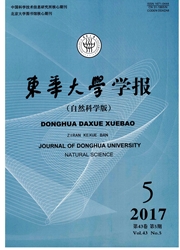

 中文摘要:
中文摘要:
以上海地区典型冬季气候条件为基础,考虑风速与风向对围护结构传热过程和对太阳能的实际吸收效果的影响,利用数值方法模拟了建筑物南墙在太阳辐射作用下的传热过程.结果表明,风向和风速对围护结构外表面对流换热系数、外表面温度的影响都较大,对外保温墙体的净得热和对流散热量也有一定程度影响.在南墙背风且风向斜吹(风向与南墙法线夹角为135°)时,太阳辐射净得热量最大.南墙在一天中的净得热量随着风速增大而下降,但当风速增大到3m/s后,南墙的太阳能实际吸收率不再明显下降.由此表明,尽管上海地区冬季出现大风的概率较高,但并不会明显削弱南墙对太阳能的有效吸收.
 英文摘要:
英文摘要:
Considering the effects of wind velocity and direction on the heat transfer of building envelope and the absorption of solar radiation by the walls, the heat transfer process of building envelope with solar radiation was studied by employing numerical simulations in Shanghai area. The results show that the ambient wind velocities and directions influence the external surface temperature of the south wall and heat transfer coefficient significantly, as well as the heat dissipation and the heat gain. The net heat gain may reach a peak value on the leeward side with the oblique angle of 135%. Moreover, the wall's net heat gain decreases with the wind velocity increasing. However, the actual solar energy absorbing rate of the wall is no longer significantly reduced when the wind velocity reaches 3 m/s and more. The results indicate that even though there is high possibility of heavy wind in Shanghai area in winter, the absorbing rate of the south wall will not be evidently weakened.
 同期刊论文项目
同期刊论文项目
 同项目期刊论文
同项目期刊论文
 期刊信息
期刊信息
